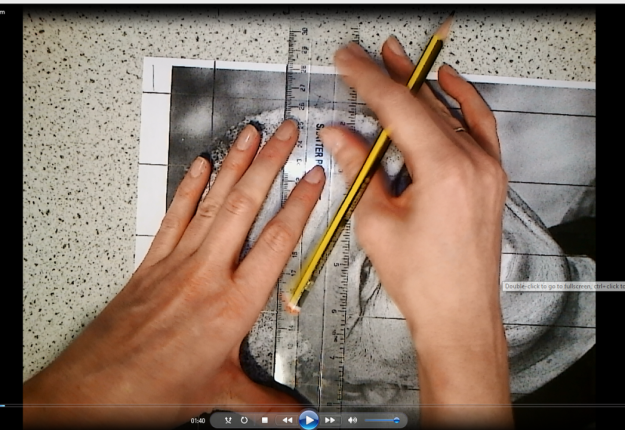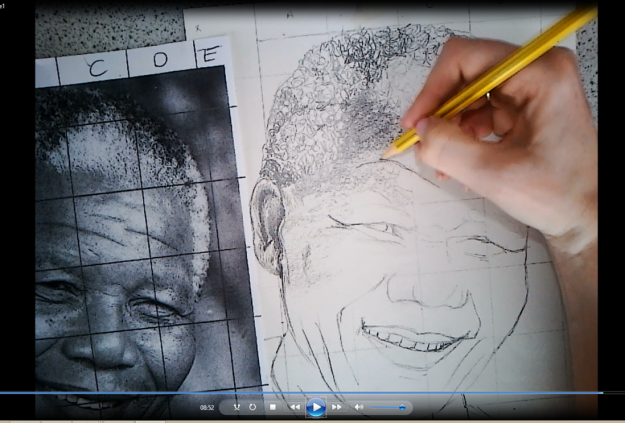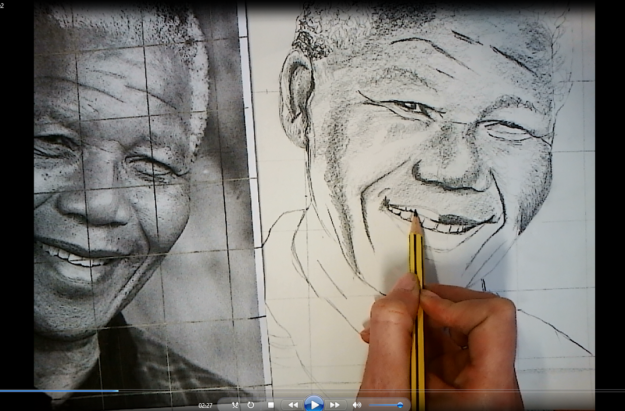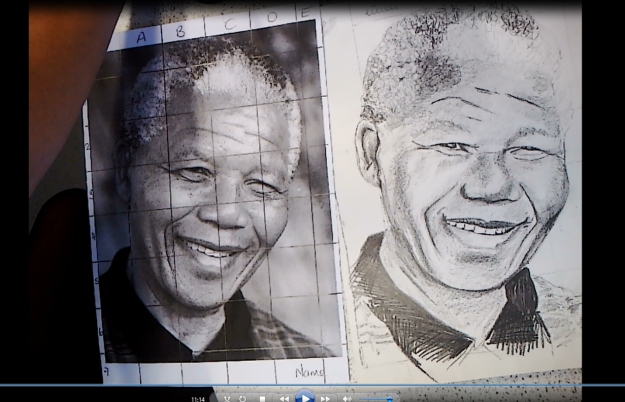In my last post, I explained how traditional teaching methods enhance (rather than oppress) creativity in art. There were many questions and concerns in the comments about what this might look like in practice. In my next few blogs, I intend to discuss my approaches in more detail, starting today with the humble visualiser. I admit that this is not revolutionary, and that there will be many teachers out there who use these all the time, but I have found this tool to be absolutely central to good art teaching. I’m not sure what I’d do without it!
In many art classrooms, pupils are invited to the front of the room to observe teacher demonstrations. They scramble out of their chairs and wander over to the front of the room where the teacher is standing, and huddle round to watch the teacher. Behaviour isn’t always easy to manage when they are stood like this. The teacher can’t see every pupil and many of the pupils can barely see the demonstration. Altogether, it’s a bit of a waste of time, and can be more stressful for teachers, particularly if this leads to challenging behaviour. Instead, I use a visualiser to deliver demonstrations. All pupils remain in their seats, and I can go through one step at a time. Rather than showing them the whole process at the front, letting them go back to their seats (where they will promptly forget everything I’ve just told them and do the wrong thing), I can show them a step and let them practise it before moving on to the next.
Here are some other benefits to using a visualiser in art lessons:
- No guess work: pupils are shown exactly what to do at each stage of the method, ensuring high quality outcomes.
- Pupils have no excuses: everyone knows what they should be doing as they have all been watching the demonstration on the board. No more ‘Miss I can’t do it because Jimmy was stood in front of me’ nonsense.
- I can scan the whole class from the front of the room and know at any time who is and isn’t watching the demonstration: this empowers me to hold every child to account.
- Some visualisers have a video function, meaning that I can record a demonstration and play it to pupils in future lessons or with different classes. Never again will I have to demonstrate a tonal ladder!)
- I can use the visualiser to show examples of pupil work to the rest of the class straight away. It’s lovely to be able to share pupils’ success in high res!
-Lizzie







Pingback: Mastery in Art | michaelaartsblog